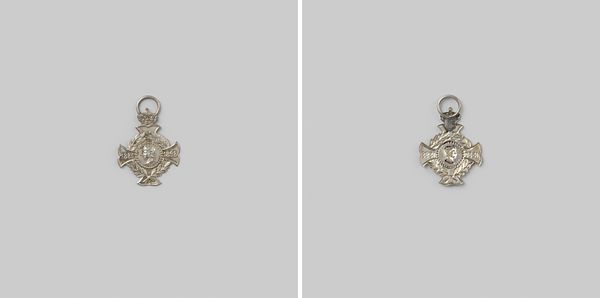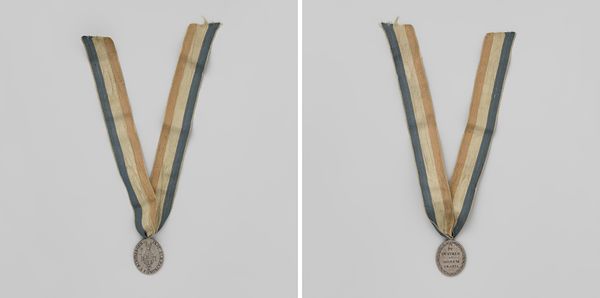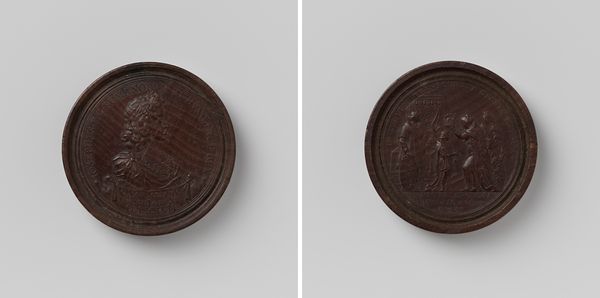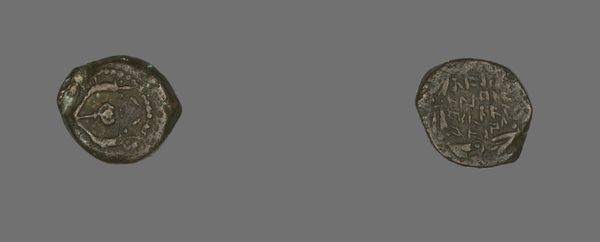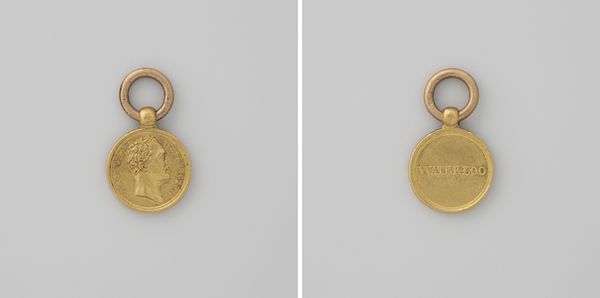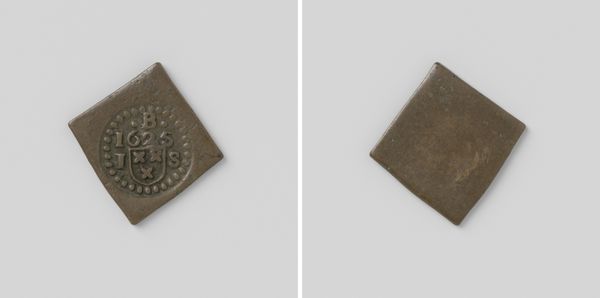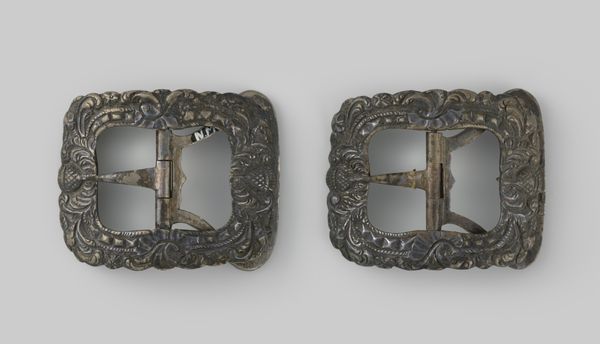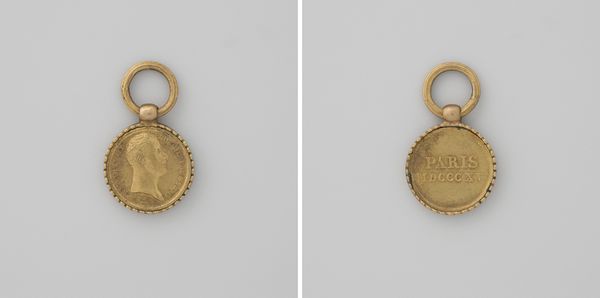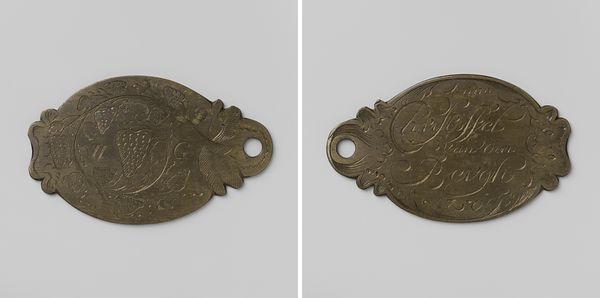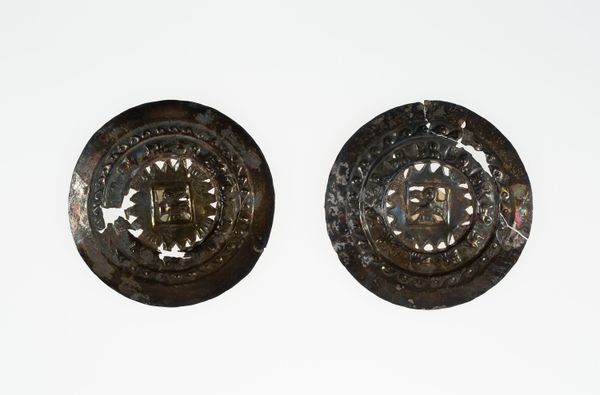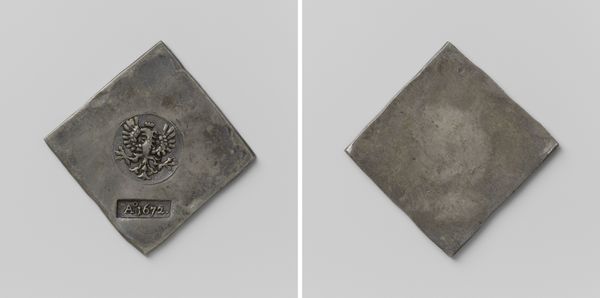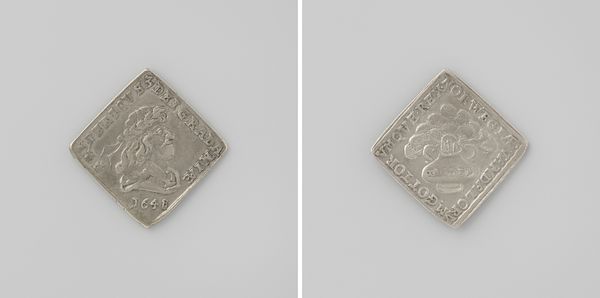
metal, relief
#
portrait
#
metal
#
relief
#
history-painting
#
decorative-art
Dimensions: diameter 2.4 cm, weight 3.19 gr
Copyright: Rijks Museum: Open Domain
This small badge representing Willem III, King of the Netherlands, was likely made using die-stamping, a method of mass production. The low relief design and the use of a metal like brass suggests an efficient process meant to produce many of these objects quickly. Its materiality—cheap metal formed by a mechanized press—speaks volumes about its intended use. Unlike a hand-wrought medal, which would have been a unique, precious object, this badge was likely produced for broad distribution, to be worn by loyal citizens. The die-stamping technique also speaks to the social context of industrial manufacturing, which allowed for the widespread dissemination of royal imagery. While we don't know the maker, it’s safe to assume that this object came out of a factory context, perhaps even being one of many such commemorative items made to feed into a booming market of patriotic fervor. This mass production, though humble, is a powerful form of expression. It reminds us to look beyond conventional notions of artistic genius and consider the ways in which everyday objects reflect wider cultural values.
Comments
No comments
Be the first to comment and join the conversation on the ultimate creative platform.

